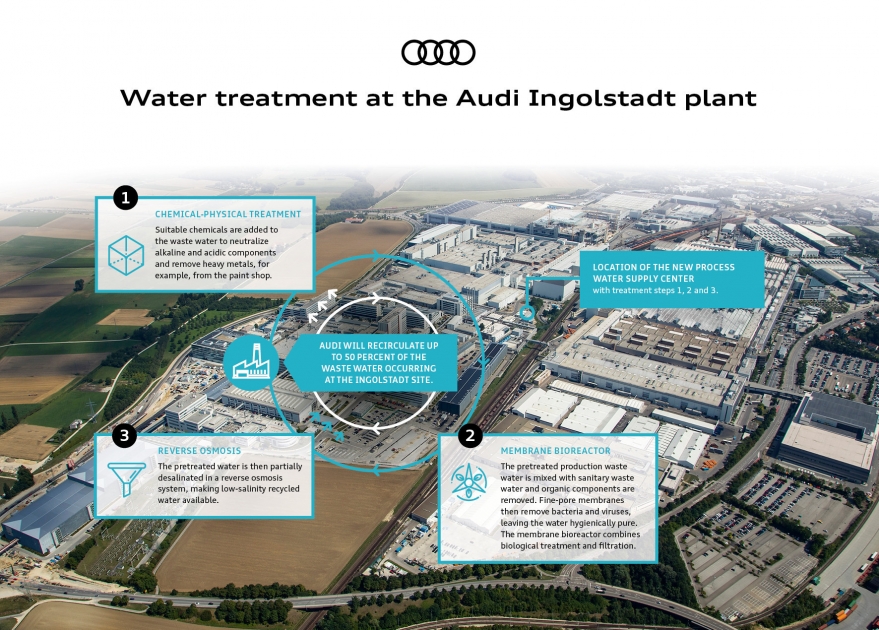
Innovative water treatment at Audi saves up to 500,000 cubic meters of fresh water a year
Audi has reached another milestone on its way to waste waterfree automobile production. The company has put a new service-water supply center into operation at the Ingolstadt site. In conjunction with the existing treatment plant, about half of the wastewater produced at the site can now be recycled and treated for reuse. In this way, Audi will saves up to 500,000 cubic meters of fresh water each year.
The heart of the service-water supply center is the so-called membrane bioreactor (MBR). Water is necessary in the entire manufacturing process of an automobile, for example in the
paint shop. With the new service-water supply center, Audi is going new ways at the Ingolstadt site and making even more efficient use of water as a resource.
“Thanks to this innovative wastewater treatment system, we are reducing the fresh-water requirements of production at the Ingolstadt plant by a third,” says Rüdiger Recknagel, Head of Environmental Protection at AUDI AG. “At the same time, we are avoiding approximately 40 percent of wastewater.”
This underscores the premium manufacturer’s commitment to the sustainable use of water: At its Mexican plant in San José Chiapa, Audi has been producing cars without wastewater since 2018, as certified by independent experts. With the new supply center, the plant in Ingolstadt has also reached a milestone along the way to zero liquid discharge (ZLD).
Before the company returns the wastewater as fresh service water to the production processes at the Ingolstadt plant, it is treated in up to three stages. It first passes through a chemical physical process. This neutralizes alkaline and acidic components and removes heavy metals, for example from the paint shop. The membrane bioreactor is then used. It is the core element of water treatment. Here the production water is mixed with sanitary wastewater and freed from organic components. The MBR then removes bacteria and viruses from the wastewater using pore-fine membranes. Audi is thus taking water treatment one step further than conventional sewage treatment plants that do not use this process. Finally, reverse osmosis removes residual salts. The treated wastewater is then returned to the production process as service water.
With the new service-water supply center, Audi will save up to 500,000 cubic meters of fresh
water each year. In conjunction with the existing treatment plant, the premium manufacturer
will in the future recycle about half of the wastewater produced at the Ingolstadt site.
In order to save groundwater, Audi is also increasingly using rainwater for service water
purposes at its Ingolstadt plant. Rainwater from over 450,000 square meters of roof and
parking space is collected in underground cisterns. Depending on weather conditions, up to
260,000 cubic meters of rainwater can be used annually.
Audi has set itself the target of reducing the environmental factors of energy, CO2 emissions,
fresh water, waste and volatile organic compounds by 35 percent per car produced by 2025
compared with reference year 2010. The company’s long-term goal is to produce automobiles that are CO2 neutral and wastewater free.


























